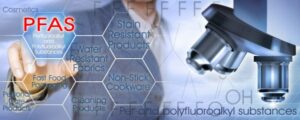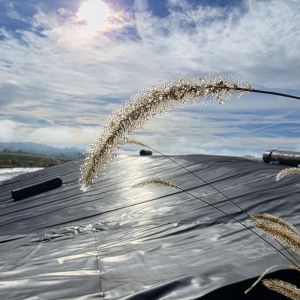What You Need to Know about the New EPA PFAS MCL and Hazardous Substance Designation Rule

Written by: Brianne Inman, LPG
The United States (U.S.) Environmental Protection Agency (EPA) is taking action against per-and polyfluoroalkyl substances (PFAS) that have been linked to cancers, impacts to the liver and heart, and immune developmental damage to infants and children.
What are PFAS?
PFAS are a group of synthetic chemicals with complex chemical structures that are widely used in manufacturing due to their water and grease-resistant properties. Common applications for PFAS range from non-stick cookware to firefighting foams and numerous other everyday products. PFAS are often called ‘emerging contaminants’ with new studies being needed to continue learning about the harmful effects of PFAS exposure. The EPA CompTox database currently lists nearly 15,000 known PFAS structures1.
What is the new Rule?

On April 10, 2024, the EPA finalized the first-ever national drinking water standard for exposure to PFAS2. The standard for drinking water set by the EPA is known as the maximum contaminant level (MCL). Scientific studies are conducted to determine levels that are harmful to human health based on daily exposure. Once the daily exposure level is determined, known as the reference dose (RfD), the EPA can set the MCL as an enforceable standard of the level of a specific contaminant allowed in a public water system. The MCLs are typically adopted by individual states to maintain drinking water standards.
On April 19, 2024, the EPA announced that a new rule will be issued designating two of the more widely used PFAS, perfluorooctanoic acid (PFOA) and perfluorooctanesulfonic acid (PFOS), as hazardous substances under the Comprehensive Environmental Response, Compensation, and Liability Act (CERCLA) commonly known as the Superfund program3. The Superfund program has been identifying and regulating the highest priority hazardous cleanups since 1980.
What changes does the new Rule bring?
Regulation has not previously been in place for PFAS, meaning no action was required to manage these compounds. The new rule means regulation is here and that a release of PFOAs or PFOS equal to or greater than one pound is required to be reported within 24-hours to the National Response Center (NRC), State, Tribal, and local emergency responders. In identifying these substances as listed hazardous substances adds further regulatory implications beyond release reporting such as transportation, storage, disposal, and notifications during property transactions.
Who does this Rule affect?
The aim of the new rule is to concentrate on significant contributors of PFAS to the environment. Significant contributors could include PFAS manufacturers, industry that uses/has used PFAS in a manufacturing process, federal facilities, and other industrial parties. The rule is not intended to identify farmers, municipal landfills, water utilities, municipal airports, and local fire departments where funding and other factors may not make regulation applicable.
Other considerations moving forward?
The new rule will also require federal entities to provide notice about the storage, release, or disposal of PFOAs and PFOS during a property transaction. The Department of Transportation (DOT) currently has a list of hazardous materials that are regulated under the Hazardous Materials Transportation Act to ensure proper storage and shipment of hazardous materials. The DOT will begin regulating PFOAs and PFOS as hazardous materials.
Are there other PFAS changes?
PFAS continue to be an emerging contaminant with new information being learned through ongoing studies. Research and scientific studies are currently being conducted to identify the best approach to remediate and clean-up PFAS releases and contamination. Currently the EPA recognizes three methods to address a PFAS release including thermal destruction, excavation (landfills), and subsurface injections4.
We are here to help:
Patriot has over 29 years of experience working across multiple states to navigate environmental impacts and interpret the evolving regulations. Patriot offers customized solutions for each unique situation through their multi-disciplinary team. This network consists of laboratories, remediation services, and legal counselors to work for our clients to decode regulatory requirements and maintain compliance. Call us today at 317- 578-8058.
Sources:
1 CompTox Chemicals Dashboard (epa.gov)
 Brianne Inman, LPG is a Senior Project Manager in Patriot’s Environmental Practice Group and has over 13 years of experience providing environmental consulting services.
Brianne Inman, LPG is a Senior Project Manager in Patriot’s Environmental Practice Group and has over 13 years of experience providing environmental consulting services.


